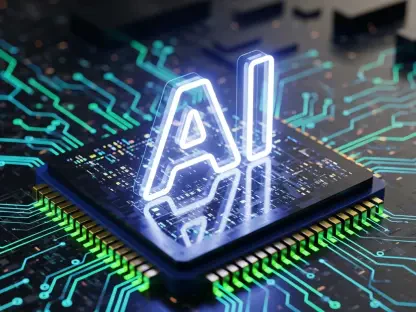Understanding the Rise of AI System Poisoning
In an age where artificial intelligence (AI) systems are becoming pervasive across industries, the cybersecurity landscape is evolving with new types of threats. Among these, AI system poisoning stands out as a rapidly emerging challenge that requires immediate attention. Hackers are no longer just attacking traditional IT infrastructure; they’re targeting AI models to inject corrupted data or manipulate the models to breach their intended functionality, a reality that is becoming more common as AI adoption increases. Recognizing and addressing AI system poisoning is crucial, not only for the stability and trustworthiness of AI services but also for the broader digital ecosystem that increasingly relies on them.
Unpacking the Types of AI Poisoning
Availability Poisoning Attacks
Availability poisoning is an insidious form of cyber assault where the attacker’s goal is to degrade the performance or disrupt the availability of AI services. These attacks can result in extensive downtime, causing not only operational disruption but also a substantial erosion of trust among users and clients. Imagine the chaos when an AI-driven critical infrastructure fails, or a crucial data analysis platform grinds to a halt—this is the impact of availability poisoning, which stands as a stark reminder of our dependency on reliable AI systems.
Targeted Poisoning Attacks
With targeted poisoning, attackers meticulously craft their onslaught to interfere with specific functions of AI systems. In sectors where AI is tasked with making critical decisions—from healthcare diagnostics to financial assessments—these attacks can have dire consequences. Targeted attacks can skew results, leading to incorrect diagnostics, flawed risk assessments, or compromised personal data. As such, defending against tailored corruption has become essential to preserving not only the functionality but also the credibility of AI systems.
Backdoor Poisoning and Model Corruption
When discussing backdoor poisoning, we’re in the territory of stealth and subterfuge. These attacks embed hidden functionalities within an AI model that can be remotely triggered, allowing attackers to circumvent standard operations and gain unauthorized access or cause disruptions. Meanwhile, model corruption threatens the very foundation of AI by altering its algorithms, potentially leading to unpredictable and adverse outcomes. These kinds of poisoning are particularly dangerous because they can lie dormant until activated, making them difficult to detect upfront.
The Expanding Target Base
Tech Companies at the Frontline
These novel forms of cyberwarfare have put tech companies squarely in the crosshairs, especially those engaged in AI development and deployment. One high-profile example is the discovery of malicious machine learning models within the Hugging Face repository—models originally intended to further AI research and development but instead posed a significant threat of contagion to any interacting system. Such instances demonstrate the urgency of safeguarding the sources and components of AI technologies.
The Cascade Effect to End-Users
Compromises in AI systems don’t stop at the developer level; the effects cascade down to the end-user. When an AI service is breached, every individual or business relying on that service is at risk. From privacy violations to financial losses, the repercussions of compromised AI systems are vast and varied, making it imperative to shore up defenses not just for the sake of technology companies but for the protection of every user’s digital life.
Addressing the Cybersecurity Gap
Preparedness in Organizations
A shortfall in defense is arguably most apparent within organizations themselves, which often lack the necessary mechanisms to detect and mitigate AI poisoning attempts effectively. For example, cybersecurity personnel may be adept at handling traditional threats but find themselves outpaced by the sophistication of AI-targeted attacks. A report by ISC2 underscores this, revealing a substantial portion of professionals admitting to an unpreparedness to tackle the unique challenges posed by AI system misuse.
The Disconnect Between AI Evolution and Cybersecurity
The rapid evolution of AI is not mirrored in the cybersecurity measures currently in place. This disconnect means that even as AI technologies surge forward, our protective measures lag behind, leaving systems vulnerable. Industry professionals are voicing their concern over this lag, emphasizing the need for a concerted effort to bridge the gap between AI’s advance and cybersecurity readiness, to keep up with and effectively counter the intricate nature of AI system attacks.
Building a Multilayered Defense Strategy
System Access and Identity Management
Strengthening access protocols and identity management can create a significant barrier to AI system poisoning. Robust measures such as multifactor authentication, stringent access controls, and continuous monitoring can prevent unauthorized access and alterations to AI systems. Organizations have seen the benefits of investing in strong identity management frameworks, with many examples pointing to success in averting potential security disasters.
Advanced Detection and Data Governance Practices
Advanced SIEM (Security Information and Event Management) systems and anomaly detection play critical roles in the early identification of potential poisoning attempts. Coupled with strict data governance practices, they form an essential part of a proactive defense against AI system corruption. By meticulously tracking data lineage and consistently applying robust governance procedures, organizations can ensure the integrity of their AI systems and rapidly address any anomalies that may signal an attack in progress.
Cultivating Expertise and Collaboration
Fostering Knowledgeable Teams
One of the keys to combatting AI system poisoning is to cultivate teams proficient in the particularities of AI-related security risks. Investing in the training and specialization of existing cybersecurity professionals can go a long way in fortifying an organization’s defenses. Knowledge in the nuances of AI threats empowers these teams to devise and apply targeted defense strategies that are critical in the face of sophisticated and evolving attacks.
Cross-Functional Collaboration Framework
Efforts to manage AI risks must transcend individual departments and call for executive-level collaboration. Creating a culture where cross-functional teams work cohesively to encompass all aspects of AI security can lead to a comprehensive defense mechanism. By aligning goals and sharing insights, different sectors within a company, from IT to executive leadership, can join forces to foster a resilient AI security posture.
Toward an Enhanced AI Security Posture
Policy Development on Ethical AI Use
In the mission to fortify defenses against AI system poisoning, the establishment of policies centered on the ethical use of AI is paramount. Organizational leadership must step up to advocate for and enact guidelines that promote responsible AI practices. By cementing a framework for ethical AI, companies set a precedent for integrity and trustworthiness in their AI deployments, shielding them from both exploitation and reputational harm.
Maintaining Vigilance and Adaptability
As artificial intelligence (AI) takes on a larger role across various sectors, the cybersecurity realm confronts new threats. Among them is AI system poisoning, an emerging challenge as malicious actors expand their attacks beyond traditional digital infrastructures to exploit AI systems by introducing tainted data or tampering with the systems themselves. These acts aim to compromise AI models, undermining their original purpose and functionality. This trend of attacking AI is on the upswing, paralleling the rate at which AI finds integration in daily operations. Addressing the risks associated with AI system poisoning is imperative for maintaining both the integrity and dependability of AI-driven services. Moreover, it’s essential for safeguarding the expanding digital environment that is increasingly dependent on these intelligent systems. Ensuring secure AI applications is not just about the technology itself but also about the confidence in the digital ecosystem that undergirds modern life.









